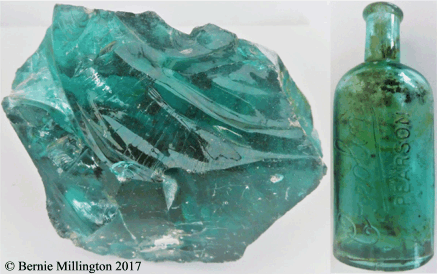The Area around Meldon Quarries is a wealth of both geology and industrial archaeology, both of which are passions of mine. The area boasts three distinct large scale disused quarry zones, with some evidence for other smaller ones, including some of the dump areas that may have been infilled quarries. To highlight this wonderful area I have placed three EarthCaches to highlight this, as well as a Puzzle Cache on a wider geological theme.
The quarries around here are exploiting a very specifically rock type, which is one of south-west England's most important and famous rock, Meldon Aplite. The quarry extracting began in 1889 when it was discovered that there were deposits of Aplite on either side of the Red-A-Ven Brook. The Meldon Aplite contains a unique chemical composition in the whole of Britain and occurs in a number of dykes around the area. The largest intrusion of which is about 60-70 ft thick. There were a number of uses for this extracted Aplite, including the production of stoneware, enamelling, abrasives, road metalling and for a short period, glass. The production of glass began here in the 1920s. Prominent glass manufacturers analysed the Meldon Aplite and it was discovered that the chemical composition was ideal to provide the basic material for glass manufacture. These chemicals include potassium (K), aluminium (Al), sodium (Na) and silica (Si02) which area all important to produce glass.
The manufacturing procedure transformed the entire area into a manufacturing centre, including 12 furnaces and several leats providing the area with water, both for power and also used in the production. These features that remain today include, a weighing station, a leat (which runs on the hillside above and appears to now like it would have drained straight into the top off the quarry face) and several spoil heaps. Despite the large scale production that was undertaken, and the evidence surviving today, there were several problems that the company running the Meldon Aplite quarries faced. The biggest concern was the difficulty in consistently producing clear glass, rather than the green tinted glass shown below. This became such a large problem that in 1921 a hundred men were made redundant in 1921. Work continued regardless, at lower scale, until the 1980s with the final nail in the coffin for the glass production at Meldon when it became cheaper to import equally good quality stone from Scotland. Quarrying did continue for other industries, such as ballast for British Rail. However, this too ceased with the privatisation of British Rail in 1994 and the quarrying operations were purchased by EEC Quarries. By 2001 the area had effectively been put into retirement and has been slowly returning to a natural environment ever since. The rock face also displays some hints to the method of quarrying. If you look closely, particularly in the middle of the rock face, there are the remains of bore holes, about 3-4 metres in length.

The geology of Aplite, and therefore the area of these quarries, is very similar to granite. They form in a very similar way, with both being an intrusive igneous rock, which means that the igneous rock is formed by magma being forced into older rocks at depth below the earth's surface. There is solidifies and is only exposed by later erosion of the units of rocks above the intrusion. Unlike granite, which is defined as a course grained igneous rock, Alpite is considered a uniformly fine grained rock. Unlike the relatively large crystalline structures in granite, Aplite's grains/crystals are only 2 mm across, and give Aplite its characteristic granular texture.
Aplite is commonly formed in areas that already have intrusions of granites, as well as less commonly in syenites, diorites, quartz-diabases and gabbros. As a result of the formation of Aplite within other geological units they usually have a genetic affinity with those rock types they are formed within. For example at the Meldon Quarries, which is a granite area, is the last part of the magma to crystallize. As a result of this they have a corresponding quartz and feldspar composition as the surround granite material and therefore resembles the chemical composition of this rock.
To log this EarthCache go to the posted coordinates and the higher quarry waypoint and send me a message or email answering these following questions
Go to the posted coordinates
1) Look at the rock faces and describe their appearance (including texture and particle size)
2) Within the rock face there are number veins running through the rock. Describe the differences between them at the Aplite.
3) To the south-west there is a smaller alcove. On the floor of the quarry there are 'items' that are note within the main part of the quarry. What are these?
Go to the higher quarry waypoint
4) From here you will get a good view of the different levels of the quarry. How many are there?
5) Look at the south-east, against the quarry face, there is a slope of material covered in grass. What angle is this grass at (where 90 degress in vertical and 0 degrees is horizontal)?
As a bonus it would be much appreciated (although not required) if you take any photographs of any pieces of industrial archaeology (that isn't a spoiler) to add them to your log.